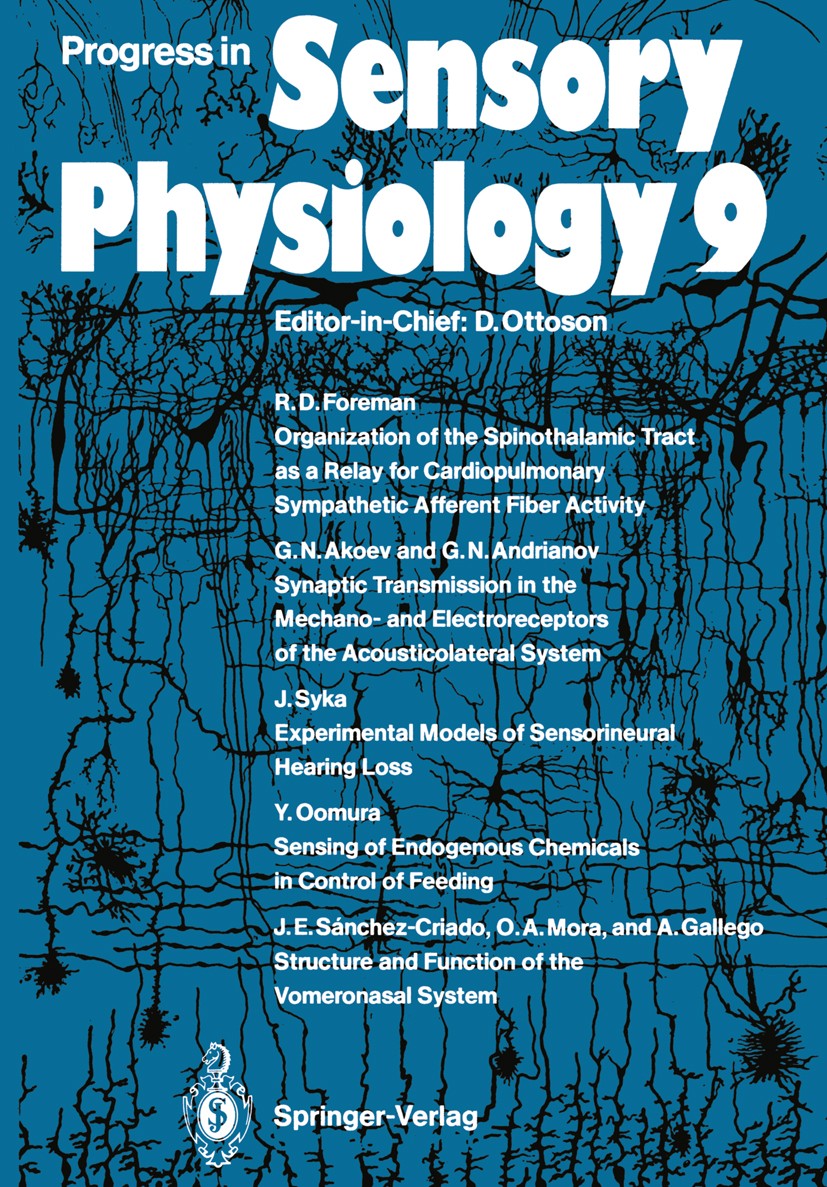| 书目名称 | Progress in Sensory Physiology 9 |
| 编辑 | Hansjochem Autrum,Edward R. Perl,David Ottoson |
| 视频video | http://file.papertrans.cn/761/760688/760688.mp4 |
| 丛书名称 | Progress in Sensory Physiology |
| 图书封面 |  |
| 描述 | Sympathetic afferent fibers originate from a visceral organ, course in the thoracolumbar rami communicantes, have cell bodies located in dorsal root ganglia, and terminate in the gray matter of the spinal cord. Sympathetic afferent fibers from the heart transmit information about noxious stimuli associated with myocardial ischemia, i. e. angina pectoris. Previous reviews have described the characteristics of cardiovascular sympathetic afferent fibers (Bishop et al. 1983; Malliani 1982). This review summarizes that work and focuses on the neural mechanisms underlying the complexities of angina pectoris. In order to understand anginal pain, cells forming the classical pain pathway, the spinothalamic tract (STn, were chosen for study. These cells were chosen to address questions about anginal pain because they transmit nociceptive informa of pain. Antidromic tion to brain regions that are involved in the perception activation of STT cells provided a means of identifying cells involved with trans mission of nociceptive information in anesthetized animals. Other ascending pathways may also transmit nociceptive information, but many studies show that the STT plays an important role. Vi |
| 出版日期 | Conference proceedings 1989 |
| 关键词 | cortex; mammals; physiology; system |
| 版次 | 1 |
| doi | https://doi.org/10.1007/978-3-642-74058-9 |
| isbn_softcover | 978-3-642-74060-2 |
| isbn_ebook | 978-3-642-74058-9Series ISSN 0721-9156 |
| issn_series | 0721-9156 |
| copyright | Springer-Verlag Berlin Heidelberg 1989 |
 |Archiver|手机版|小黑屋|
派博传思国际
( 京公网安备110108008328)
GMT+8, 2025-11-23 09:43
|Archiver|手机版|小黑屋|
派博传思国际
( 京公网安备110108008328)
GMT+8, 2025-11-23 09:43


